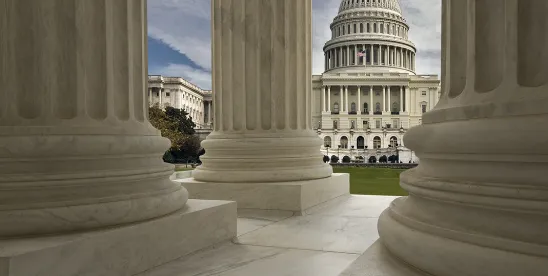While most of the attention surrounding the Supreme Court’s (the Court) decision in Loper Bright v. Raimondo (Loper), overturning the longstanding Chevron doctrine, has focused on the increased potential for successful challenges against agency actions, the decision will impact all stages of the public policy lifecycle—legislation, regulation, and only then litigation. Because that lifecycle begins with the foundational act of bill drafting in Congress, Loper may change the way Congress does its business. And because Chevron’s framework has historically been applied in such a sweeping fashion—touching on nearly every area of law and cited in an estimated 18,000 lower court decisions—the changes for how Congress makes laws could be substantial.
LOPER’S OVERRULING OF CHEVRON
Under the Chevron doctrine, courts deferred to “reasonable” agency interpretations of a statute if the underlying statute was found to be ambiguous (including silent) on a specific issue—even in cases where the court might have thought there was a better interpretation. Loper criticized Chevron’s framework as “demand[ing] that courts mechanically afford binding deference to agency interpretations” if the law is found to be ambiguous (emphasis in original). The doctrine was considered to “put a thumb on the scale” in favor of an agency’s legal interpretations.
Loper squarely overruled Chevron. The decision dramatically reduces deference to the agency and places on courts the obligation to determine fully independently whether an agency’s actions are consistent with the words of the statute and intent of Congress. Courts must in every case, even one of statutory ambiguity, rely on the “traditional tools of statutory construction” to identify the “best reading” of a statute to determine whether the agency’s action is consistent with the statute. The agency’s opinion can still be considered to the extent the court finds it persuasive, but the days of significant deference are over. Ambiguity in statutes must now be addressed by Congress in adopting more precise legislation, rather than by courts deferring to the agency interpretation of that ambiguous intent.
LOPER’S IMPACT ON CONGRESS
A prime example of Loper’s new mandate for Congress is the Court’s approach to the agency’s authority to act. Loper makes clear that with the Chevron doctrine gone an important question in any analysis will be whether Congress granted the agency the authority to act in the first place—what the Court called “fixing the boundaries of the delegated authority.” Put another way, the Court will ask, “Does the statute authorize the challenged agency action?” Loper held that ambiguous statutory authorizations of authority will not suffice.
Loper interpreted the Magnuson-Stevens Fishery Conservation and Management Act (Magnuson-Stevens), which the federal National Marine Fisheries Service (NMFS) argued gave it the authority to require shipboard observers and to charge fishing companies for them in the northeast herring fishery. The statute authorized such fees in certain specified fisheries that did not include the northeast herring fisheries. The court of appeals held, using the Chevron framework, that the omission created an ambiguity in the statute and deferred to the agency’s interpretation allowing the charges. The appeals court’s decision was based in part on statutory language that permitted the agency to take actions “necessary and appropriate for the conservation and management of the fishery.”
The Supreme Court held that the broad “necessary and appropriate” language was not specific enough to grant the agency authority to allow the agency to require observers in a fishery that was not one of those. It said that the statute’s silence on the specific issue of the northeast herring fishery did not allow the agency to require observers in that fishery. Nor did the statute’s overall ambiguity. The agency was required to find more specific authority, and it could not.
How specific did Congress need to be? The Court provided some helpful guidance on pages 17-18 and in footnotes 5 and 6 of its opinion. Those pages should be required reading for every congressional staffer in the business of legislative drafting. In short, the Court said delegations of authority must be precise and specific in order to give the agency “a degree of discretion.” The Court gave, as a favored example, “some statutes [that] ‘expressly delegated’ to an agency the authority to give meaning to a particular statutory term.”
Of course, specific and precise authorizations are not the way Congress has always done its business, and the US Code is replete with broad authorization language. Bill drafters have often relied on broad statutory language and/or silence to allow and even encourage agencies to fill in the gaps. Congress has done that for a variety of reasons—to provide flexibility because future issues are often hard to anticipate, because Congress wants expert agency officials to flesh out laws, and because the vagaries of the legislative process can encourage vagueness over specificity. In a highly polarized Congress, the devil that is in the details of legislative language is sometimes left to federal agencies to reconcile later so that agreements within Congress can be reached. In other cases, as the Court noted, the ambiguity might be purely unintentional.
The Supreme Court’s new mandate for more specific authorizations of authority will place an imposing new requirement on Congress to draft its bills more precisely. Write the authorization too broadly and it may not pass judicial muster. Write it too narrowly, and Congress risks missing areas of interest where it would have wanted the agency to act. This dilemma may be particularly difficult in emerging areas like regulation of cryptocurrency and artificial intelligence, where contours of the issues are yet to be fully understood.
Drafting more precise grants of authority in the future is only part of the dilemma for Congress. An equally challenging problem is what Congress will do with the many broad, ambiguous, or silent grants of authority currently in law, some of which were enacted years or even decades ago. Go back and fix them? Let sleeping dogs lie? Case by case decisions will be made depending on the interests and positions of the specific bill drafters and the statutory restraints on challenges after a period of time.
In every judicial review of an agency’s action a key question is whether the agency acted “contrary to law.” That law is generally the statutes that Congress writes for the agencies to implement and enforce. Loper will require more precise statutes in general, creating a need for Congress to understand issues more thoroughly. It will not be enough for Congress to broadly identify issue areas and hand off the complex task of sorting through them to agencies. That may require more expert congressional staff, particularly on the committees of jurisdiction that normally control the legislative drafting within their jurisdiction. It may also be increasingly important for Congress to understand how federal courts and administrative judges have interpreted vague statutes, as such case law will further inform Congress as to how statutes may be drafted to accomplish its objectives and withstand future judicial challenges. A typical congressional committee may only have a relatively small number of staffers with expertise in a specific issue compared to a federal agency that might have thousands. Congressional staffers increasingly will need to seek technical advice as they draft new laws. If Congress is up to the job, it will justify Justice Scalia’s belief that “Congress knows to speak in plain terms when it wishes to circumscribe, and in capacious terms when it wishes to enlarge, agency discretion.” City of Arlington v. FCC, 569 U.S. 290, 296 (2013).
Congress’ response to Loper can play out in a variety of ways. Still to be determined is how Congress will react to the obligation of drafting more specific and precise instructions for federal agencies. It is also unclear how Congress will exercise its responsibilities given the need for more legislative branch substantive expertise or how the new requirements will impact legislative deals that may no longer be achievable once negotiators become mired in the details. On 9 July, the chairperson of each committee in the US House of Representatives wrote the heads of federal departments and agencies under its jurisdiction asking for assistance in identifying agency actions, past and ongoing, that could be impacted by Loper, including all relevant judicial decisions since 1984. Each letter said the committee leadership was “compelled to underscore the implications of Loper Bright and remind you of the limitations it has set on your authority.”
Over the past 15 years, Congress has steadily gravitated towards procedural options that make it easier to enact laws, conduct oversight, and confirm nominees along increasingly partisan lines with little to no support from the minority party. This trend has mirrored the executive branch’s steady march at the same time towards more partisan policymaking through unilateral executive actions, administrative rulemakings, guidance documents, enforcement initiatives, and presidential appointments. It remains to be seen how much Loper will encourage a resurgence in the moderating influence of the minority party’s voice within the policy lifecycle in Congress and at the federal agencies, and how far Congress and the executive branch will be willing to go to figure out ways to reassert a more robust policymaking authority for federal agencies once again.
CONCLUSION
It’s too early to fully unpack the impact of a decision like Loper on the congressional bill writing process. But even a cursory reading of the decision makes clear the Supreme Court expects more precision in congressional bill drafting going forward. Loper will thus have a far-reaching impact across the entire public policy lifecycle, beginning with the way Congress writes its laws, and extending through agency implantation and judicial review.








 />i
/>i


